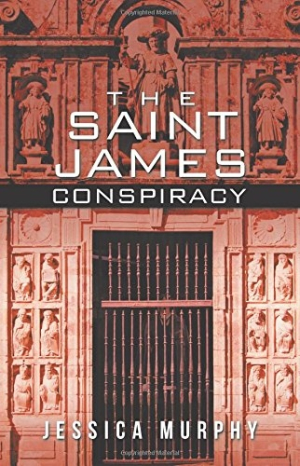The Saint James Conspiracy
The Saint James Conspiracy satisfies through a blend of scholarly passion and suspense.
Jessica Murphy’s The Saint James Conspiracy is an entertaining, intricate cloak-and-dagger novel that explores a controversial theory in Christian history: that a substitute for Jesus died on the cross.
The book highlights faith, greed, and the power of organized religion through a multistrand plot that spans centuries. Retired professor Mackellan Kirby’s search for one of the Dead Sea Scrolls results in volatile interpretations of biblical events.
Lively chapters alternate between Kirby’s base in modern-day Ireland; his journey to Spain with his niece and nephew, who accompany him on his quest; and Jesus, Mary, and Jesus’s disciples in the Jerusalem of 36 CE. Other stops include Charleston, South Carolina, where Archreverend Mathieux heads a financially lucrative Baptist complex and hires a hit man; eleventh-century Spain, where the construction of a cathedral uncovers a shattering secret; and the Vatican.
When these subplots converge through Kirby’s explanations and a careful juxtaposition of past and present, the novel becomes a classic game of wits between those who pursue the truth as it is revealed in antiquities, and those who try to preserve their own power by keeping the truth from spreading.
Splicing the stories of different characters occasionally slows the pace, as with Kirby’s flight to Spain, which is broken across sections, and the book’s wind-up toward the climax, which moves between Kirby’s research and the adversaries who seek him. Still, the alternating approach allows for the gradual disclosure of details to build anticipation.
Some momentum is lost when revelations come through letters penned in the first century rather than through Kirby’s discoveries, but the letters do provide missing links to the story of Jesus, his brother James, and what became of Jesus after the crucifixion. An unusual take on the apostle Paul’s role is particularly surprising.
The book deftly recreates staples of the genre. They include a beautiful woman spy who masters disguises and an apparent villain, Sam Wardell, who turns out to be more than he first seems. A sardonic, skillful, shadowy figure, Wardell adds vigor to scenes set in the present.
Kirby himself comes across as a man of the world who takes events in stride. His unruffled demeanor and deep intelligence add mystique. Though the book hints at his colorful past, it doesn’t detail his continuing relationship with the British SAS. A few characters fare less well; Joe, Kirby’s nephew, is cast in the role of the straight man who never fails to ask the well-timed question.
Chapters that feature Bishop Darda also stand out. His decision to defy authority illustrates a conscientious spirit with a long-range view of his actions. The book’s numerous threads tie together with salient, sometimes subtle themes on following one’s convictions for the greater good. Faith, in all its complexity, is portrayed in contrast to the Catholic Church and its contentious politics.
The Saint James Conspiracy satisfies through a blend of scholarly passion and suspense. History comes alive to illustrate the timeless battle between what is known and what troubles the known.
Reviewed by
Karen Rigby
Disclosure: This article is not an endorsement, but a review. The publisher of this book provided free copies of the book and paid a small fee to have their book reviewed by a professional reviewer. Foreword Reviews and Clarion Reviews make no guarantee that the publisher will receive a positive review. Foreword Magazine, Inc. is disclosing this in accordance with the Federal Trade Commission’s 16 CFR, Part 255.

